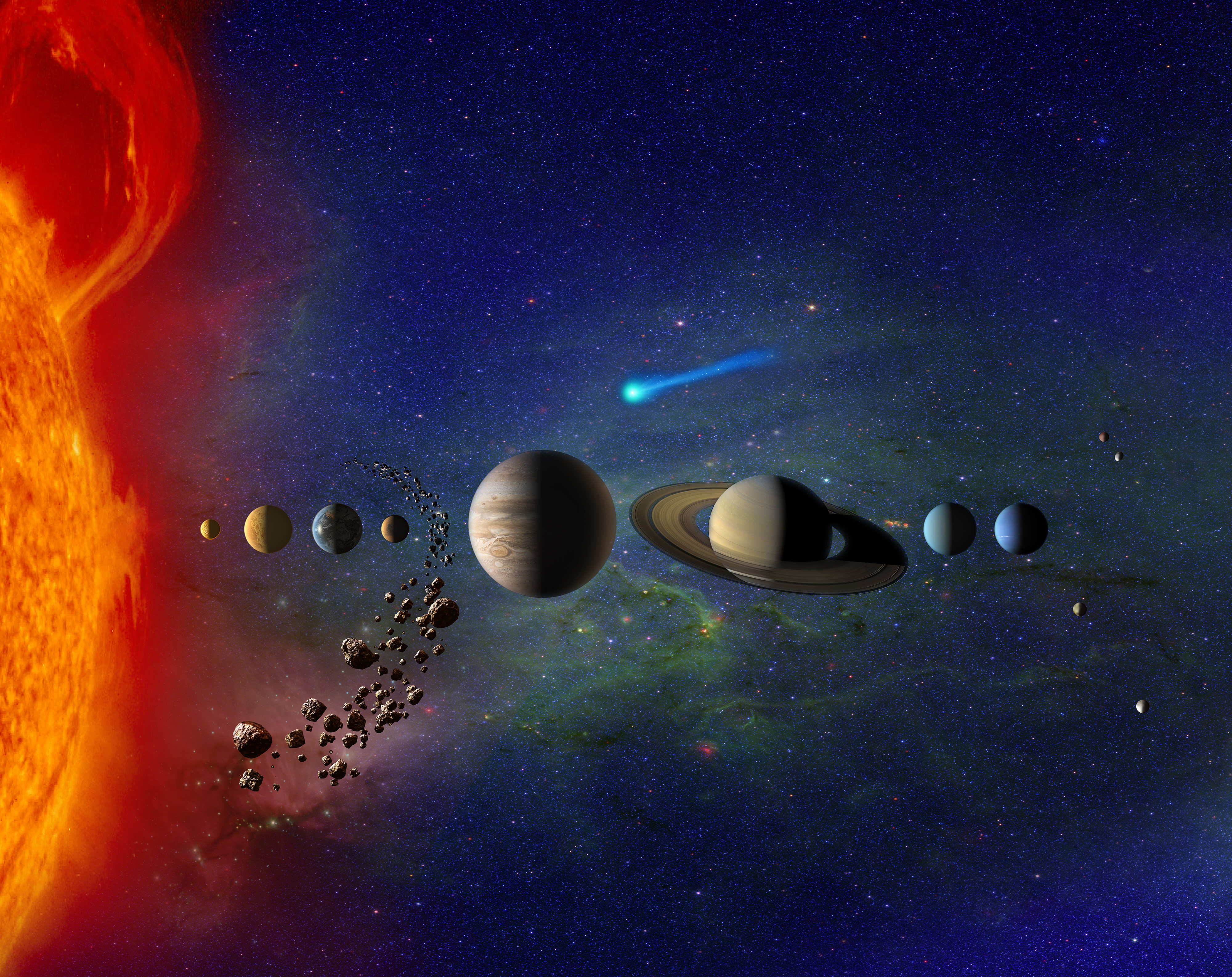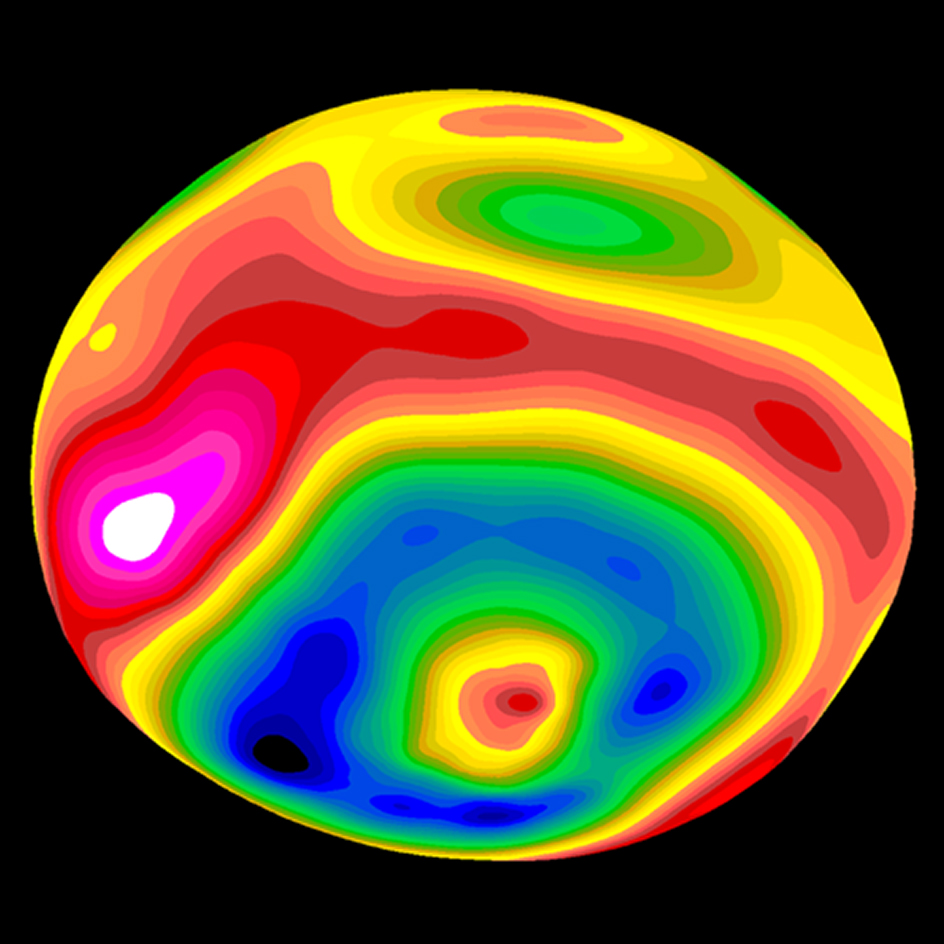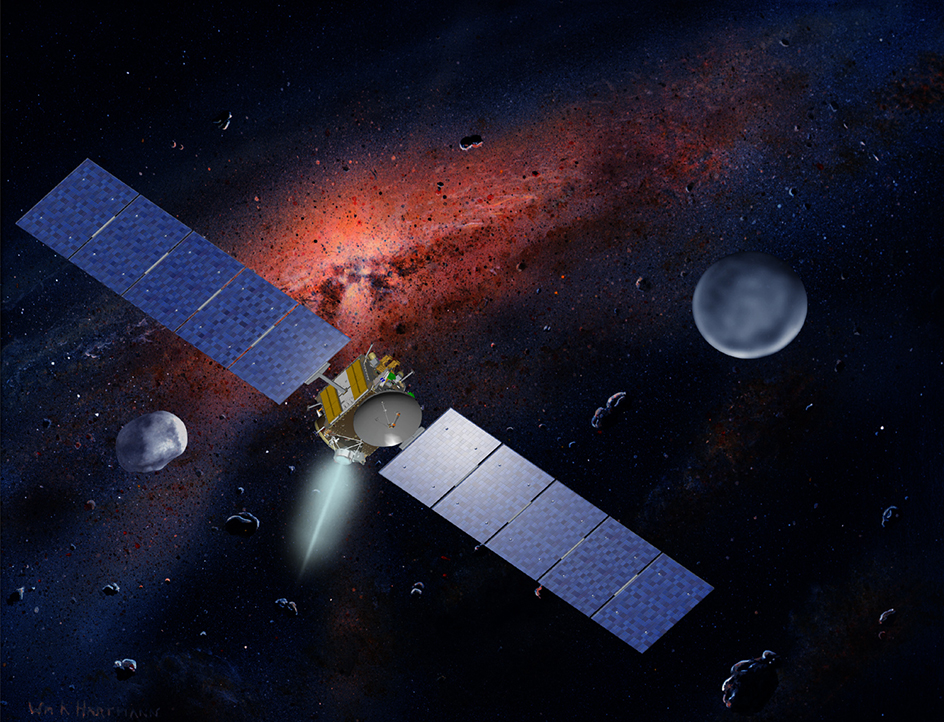Main asteroid belt is a band of asteroids circling the sun between the orbits of Mars and Jupiter. Asteroids are rocky or metallic objects smaller than a planet that orbit a star. The vast majority of asteroids that orbit the sun occur in the main asteroid belt. However, many other asteroids lie outside the belt.

The main asteroid belt lies between about 2.1 and 3.3 astronomical units (AU) from the sun. One AU is the average distance at which Earth orbits the sun, about 93 million miles (150 million kilometers). The asteroids in the main belt range in size from a few feet or meters across to over 500 miles (nearly 1,000 kilometers) in diameter. Occasionally, a large asteroid will break apart into many smaller ones, usually as the result of a collision. For this reason, smaller asteroids are far more common than larger ones. Astronomers estimate that only about 1,000 asteroids in the main asteroid belt have diameters of over 18 miles (30 kilometers). Over 1 million asteroids larger than 0.62 mile (1 kilometer) in diameter are thought to exist in the main asteroid belt, along with many more of smaller size. Most of the asteroids are in near-circular orbits very close to the ecliptic plane. The ecliptic plane is an imaginary surface through Earth’s orbit around the sun.
The asteroid belt formed about 4.6 billion years ago from the giant, rotating cloud of gas and dust known as the solar nebula. Most of the material in the solar nebula was pulled toward the nebula’s center and formed the sun. As the flattened disk of gas and dust spun around this center, particles within it collided and stuck together, eventually forming asteroid-sized objects known as planetesimals. Some of these planetesimals combined to become the planets. But the strong gravity of the planet Jupiter prevented the objects between Jupiter and Mars from combining to form a planet.

As soon as astronomers determined the relative distances of the planets in the 1600’s, they noticed that an unusually large gap existed between the orbits of Mars and Jupiter. Astronomers believed another planet might be found in this space. This belief was based on Bode’s law, a mathematical scheme, popularized in the 1700’s, that represents the distances between the planets.
On Jan. 1, 1801, Italian astronomer Giuseppe Piazzi discovered an object that was determined to orbit between Mars and Jupiter. The body was named Ceres after the Roman goddess of agriculture. Ceres’s orbit closely matched that predicted by Bode’s law. Scientists initially considered Ceres to be the “missing” planet. Within a year, however, another object, named Juno, was discovered. Its orbit was similar to that of Ceres. British astronomer Sir John Fredrick William Herschel, who had discovered the planet Uranus, suspected that Ceres and Juno were not planets. He thought they represented a different type of astronomical object. He recommended that they be called asteroids, which means starlike in Greek. As more objects with similar orbits were discovered, astronomers gradually stopped considering the objects planets. By the time the outermost planet of the solar system—Neptune—was discovered in 1846, nearly all astronomers had accepted the term asteroid for these smaller objects.

Several probes have visited asteroids in the main asteroid belt. Many have passed through the belt on their way to the outer solar system. Although the main asteroid belt contains millions of asteroids, it covers such a large area that spacecraft can easily pass through it. On its way to Jupiter, the United States spacecraft Galileo flew by the asteroids Gaspra in 1991 and Ida in 1993. In 1997, the United States probe NEAR visited the asteroid Mathilde in the main asteroid belt. The United States spacecraft Dawn visited and orbited the asteroid Vesta from 2011 to 2013 and Ceres starting in 2015. Another United States probe, Lucy, will pass by a main-belt asteroid in 2025 on its way to studying asteroids trapped in Jupiter’s orbit. Several mapping programs, such as the Zwicky Transient Facility at the Palomar Observatory, are discovering many more asteroids.
